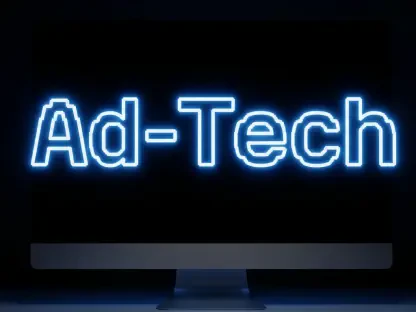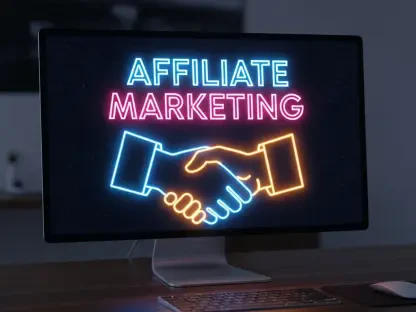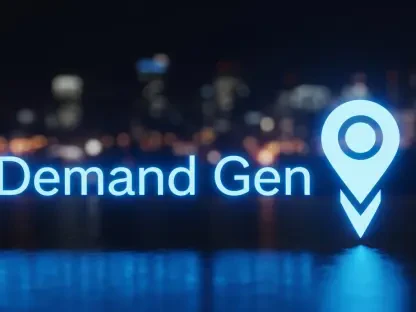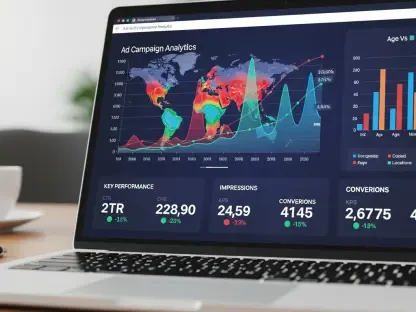The content creation industry stands at a pivotal moment, with digital platforms generating unprecedented demand for engaging, high-quality material, and as businesses and creators strive to capture audience attention in an increasingly crowded digital space, a staggering statistic emerges. Over 70% of marketers now consider content a core driver of brand success, according to recent industry surveys. This reliance on content to build connections and drive engagement underscores the urgency for tools that can streamline production while maintaining authenticity. With technology evolving at a rapid pace, the stage is set for transformative innovations to redefine how content is conceptualized and delivered across diverse formats.
The Current Landscape of Content Creation
The content creation sector today serves as a cornerstone of marketing, media, and communication, powering everything from social media campaigns to corporate storytelling. Its significance in the digital economy cannot be overstated, as brands leverage compelling narratives to foster trust and loyalty among consumers. Various formats, including text, video, and audio, cater to diverse audience preferences, amplifying the industry’s reach across global platforms and contributing billions annually to economic growth.
Technological advancements have already begun shaping workflows, with early AI tools like ChatGPT and Grammarly enhancing efficiency in drafting and editing. Social media platforms and content management systems further influence production by offering integrated solutions for distribution and analytics. These tools have shifted the focus from manual processes to semi-automated systems, enabling creators to prioritize strategy over repetitive tasks.
Key market players, such as Adobe, Canva, and major social media giants, drive innovation by developing user-friendly interfaces and integrating AI capabilities into their offerings. These companies not only provide essential tools but also set industry standards, pushing competitors to adapt or risk obsolescence. Their role in fostering a culture of experimentation ensures that content creation remains dynamic, addressing the ever-changing demands of a digital-first world.
Key Trends and Innovations Shaping 2026
Pioneering Technologies and Tools
Emerging AI-driven tools are poised to redefine content creation by 2026, with multimodal platforms like Canva AI and Higgsfield leading the charge. These systems seamlessly integrate text, visuals, and audio, allowing creators to produce cohesive outputs from a single input. Such advancements eliminate the need for multiple applications, simplifying complex tasks for professionals and amateurs alike.
A notable shift is occurring toward self-guided AI systems that manage intricate, multi-step processes with minimal human intervention. Imagine an AI autonomously handling a marketing campaign—from trend analysis to content scheduling—while still allowing for strategic input. This evolution transforms AI from a mere assistant into a proactive collaborator, freeing creators to focus on ideation and emotional resonance in their work.
Consumer expectations are also evolving, with a growing demand for hyper-personalized content tailored to individual preferences. Data analytics plays a critical role here, enabling tools to craft unique messages based on user behavior and engagement patterns. Additionally, advanced translation and localization technologies are opening doors for creators, facilitating global outreach by delivering culturally nuanced content to diverse audiences.
Market Growth and Future Projections
The content creation tools market is experiencing robust growth, with industry reports projecting significant expansion by 2026. According to forecasts inspired by the Content Marketing Institute’s insights, adoption rates of AI-driven solutions are expected to surge over the next year, driven by their ability to enhance productivity. Businesses investing in these technologies anticipate strong returns, particularly in terms of time savings and audience reach.
Performance metrics further highlight the value of automation, with early adopters reporting substantial improvements in engagement rates and content turnaround times. Efficiency gains from streamlined workflows allow teams to allocate resources toward innovation rather than routine execution. These indicators suggest a future where technology not only supports but also amplifies creative output on a massive scale.
Looking ahead, expert analyses predict that by 2026, these tools will fundamentally reshape content production, making it more accessible and data-driven. The integration of AI into everyday workflows is expected to democratize high-quality creation, enabling even small teams to compete with industry giants. This transformative potential points to a landscape where adaptability and technological fluency become essential for success.
Challenges in Adopting Emerging Content Tools
The path to integrating emerging content tools is not without hurdles, particularly when it comes to technology itself. Compatibility issues with existing systems often complicate adoption, as many businesses rely on legacy software that struggles to sync with cutting-edge solutions. Moreover, the learning curve associated with mastering new platforms can deter teams, especially those with limited training resources.
Market-driven challenges add another layer of complexity, with cost barriers posing significant obstacles for smaller organizations. The competitive digital space further intensifies pressure, as companies must keep pace with rivals who adopt innovations swiftly. This environment often leaves resource-constrained creators at a disadvantage, unable to invest in tools that could level the playing field.
Ethical concerns also loom large, with privacy risks and potential biases in AI-generated content sparking debate. The lack of transparency in how data is used or how outputs are created can erode audience trust, hindering widespread acceptance. Addressing these issues requires scalable pricing models, intuitive designs, and robust transparency features to ensure users feel confident in the tools they adopt.
Regulatory and Ethical Considerations
As content creation tools advance, the regulatory landscape continues to evolve, with data privacy laws becoming increasingly stringent. Compliance with global standards, such as those governing user data protection, poses a challenge for developers and businesses alike. Navigating these requirements is essential to avoid penalties and maintain operational integrity in a scrutinized market.
Ethical AI usage remains a critical focus, with calls for standards around transparency and accountability growing louder. Features like source citation and watermarking for AI-generated content are gaining traction as ways to ensure authenticity. These measures not only address public concerns but also help creators build credibility with audiences wary of automated outputs.
Security practices, such as on-device processing to limit data sharing, play a vital role in fostering trust. By minimizing exposure to external servers, these approaches safeguard sensitive information and reassure users. Regulatory shifts and ethical frameworks are thus shaping business strategies, encouraging companies to prioritize integrity alongside innovation as they scale their offerings.
The Future Horizon: Content Creation Beyond 2026
Looking beyond the immediate future, long-term trends suggest even greater disruptions in content creation through next-generation AI and novel formats. Technologies capable of generating immersive experiences, such as augmented reality narratives, could redefine audience engagement. These advancements promise to push the boundaries of how stories are told and consumed in digital spaces.
Human creativity will continue to play an indispensable role, even as automation expands its reach. The synergy between technological precision and personal insight ensures that content retains its emotional depth and cultural relevance. Striking this balance will be crucial for creators aiming to craft authentic messages that stand out in an automated landscape.
Consumer preferences are also expected to shift toward interactive and experiential content, driving demand for tools that support such innovations. Global economic factors and regulatory developments will further influence growth, potentially creating both challenges and opportunities. As these dynamics unfold, the industry must remain agile, leveraging innovation to meet emerging needs and sustain momentum.
Conclusion
Reflecting on the insights gathered, the exploration of emerging tools reveals a transformative era for content creation that is unfolding with remarkable speed. The journey through technological advancements, market dynamics, and ethical considerations paints a vivid picture of an industry on the cusp of reinvention. These discussions illuminate the profound impact of AI and multimodal platforms in redefining workflows and audience connections.
Moving forward, actionable steps emerge as critical for harnessing this potential. Businesses and creators are encouraged to invest in ethical, user-friendly tools while prioritizing skill development to navigate new systems effectively. Forming partnerships with technology providers who emphasize transparency proves essential for building trust and ensuring compliance with evolving standards.
A final consideration focuses on fostering a mindset of adaptability, as the landscape beyond the immediate horizon promises further disruptions. By blending human ingenuity with cutting-edge solutions, stakeholders can position themselves to not only meet but exceed audience expectations. This proactive approach lays the groundwork for sustained growth and meaningful engagement in the ever-evolving world of content creation.









